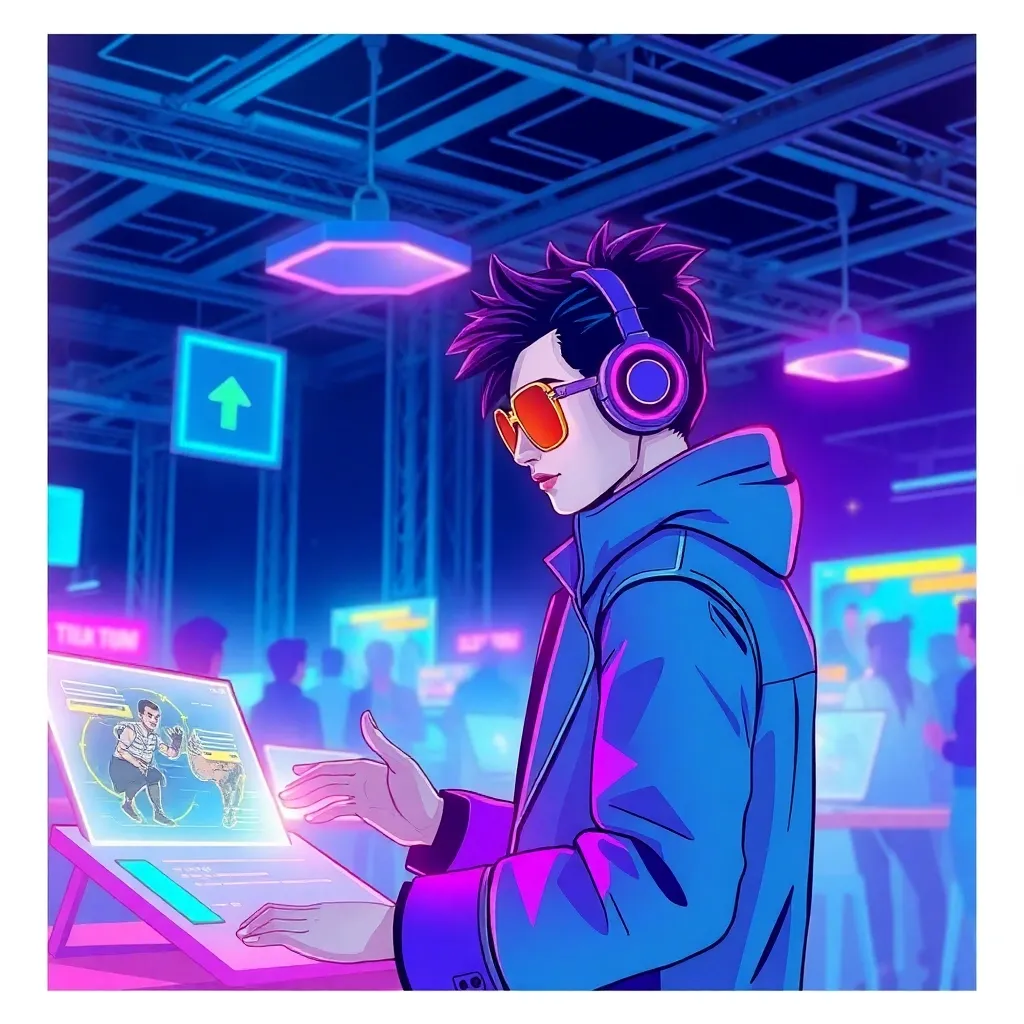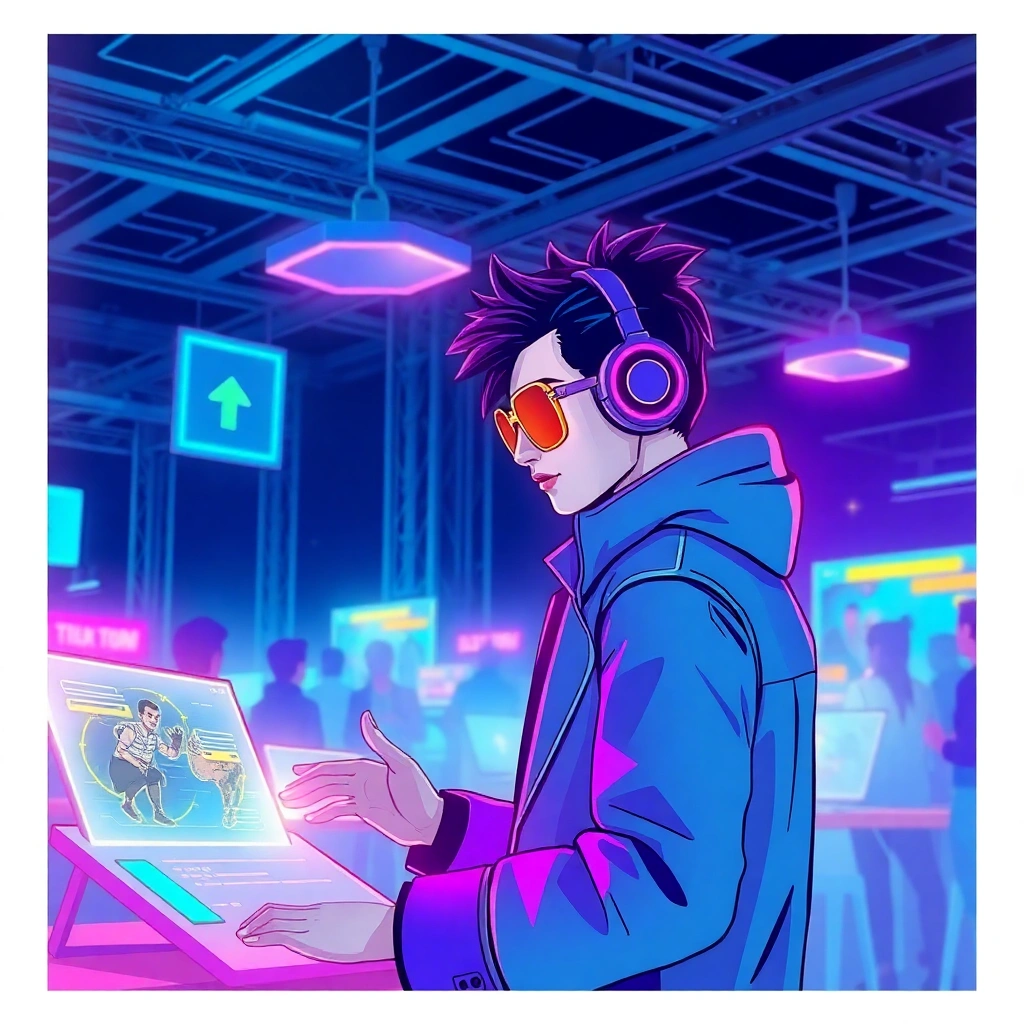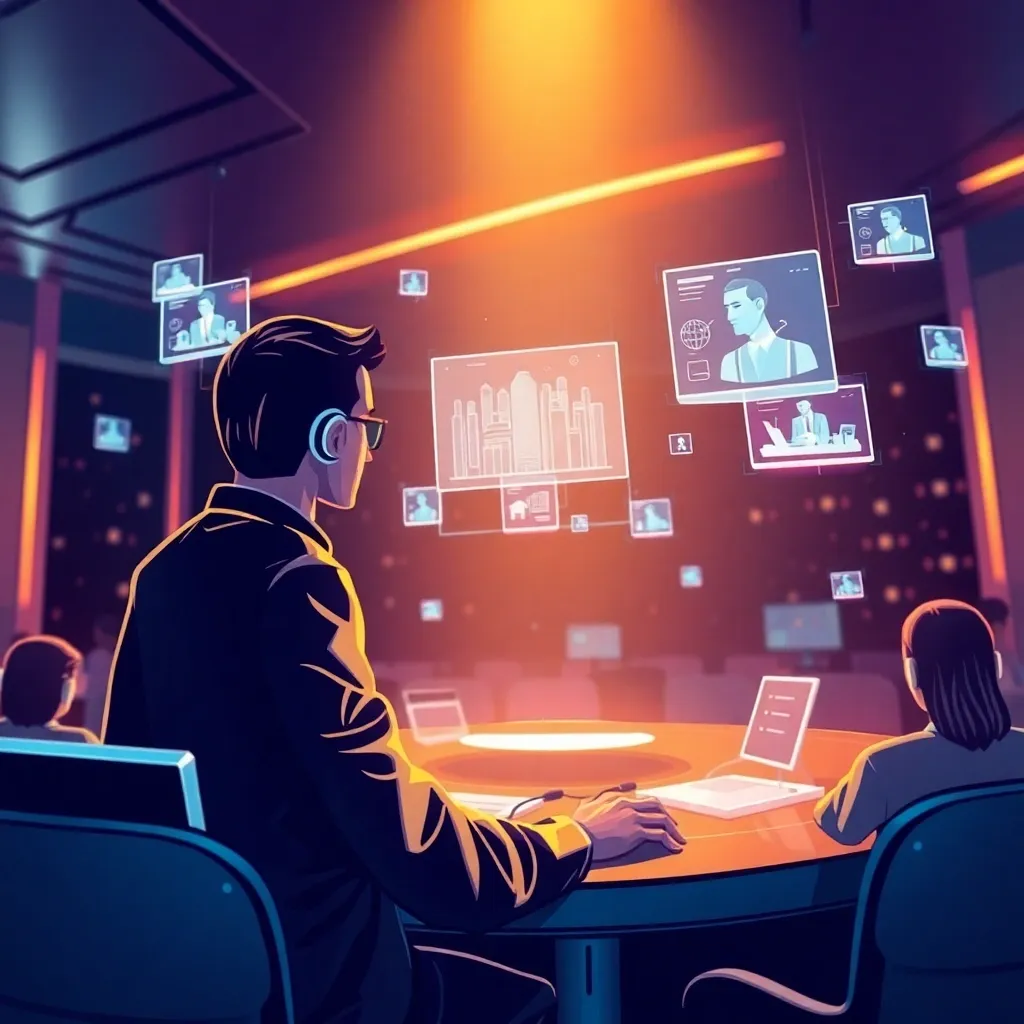Creating Memorable Experiences: AI in Event Marketing
- Introduction: From Attendance to Experiences
- The New Event Marketing Operating System
- Data-Driven Event Planning: Turn Signals into Strategy
- Personalized Marketing Experiences at Scale
- Automating Event Engagement Across the Lifecycle
- AI-Driven Event Content: Produce Once, Personalize Many
- Event Promotion Strategies That Enhance Reach
- AI for Attendee Experience: On-Site and Virtual
- Innovative Marketing for Events: Formats That Stand Out
- Platform Spotlight: How Mad Bot Art Powers the Full Stack
- Event Playbooks: From Webinars to Flagship Conferences
- Prompt Library: Kickstart Your AI Workflows
- Measurement: KPIs, Experimentation, and Insights
- Governance, Brand Integrity, and Ethics
- Implementation Roadmap: 30–60–90 Days
- Budgeting and ROI: Make the Business Case
- Frequently Asked Questions
- Conclusion: Make Every Touchpoint Memorable

Creating Memorable Experiences: AI in Event Marketing
Introduction: From Attendance to Experiences
Events no longer compete on venues and giveaways. They compete on experiences that feel personal, relevant, and memorable—before, during, and after attendees show up. That is precisely where AI in Event Marketing shines. By converting audience data into insight, crafting tailored stories on every channel, and orchestrating timely interactions at scale, event teams can turn ordinary moments into meaningful ones.
This article unpacks how to apply AI technologies across the entire event lifecycle—strategy, production, promotion, and measurement—so you can deliver personalized marketing experiences and Automating Event Engagement without bloating headcount. You’ll learn how to plan with data, produce AI-driven event content, enhance event reach with the right event promotion strategies, and elevate the AI for Attendee Experience from registration to on-site to post-event follow-up—drawing on playbooks from AI-driven campaign case studies.
You’ll also see where a unified platform like Mad Bot Art fits. As a browser-based AI production studio, Mad Bot Art helps teams script, design, animate, narrate, and ship brand-ready media and SEO content from one collaborative workspace, linking strategy to delivery. If you’re ready to make Creating Memorable Events repeatable—and profitable—read on.
The New Event Marketing Operating System
Traditional event marketing relied on linear planning, static assets, and broad messaging. Today’s high-performing teams rely on:
- Data-Driven Event Planning that fuses behavioral and contextual signals into audience segments and creative briefs.
- Personalized Marketing Experiences that tailor narratives, visuals, and offers by persona, account, and moment.
- Automating Event Engagement across email, SMS, social, websites, and chat to meet attendees where they are—instantly.
- AI-driven Event Content to iterate concepts, format content for each channel, and localize at scale.
- Innovative Marketing for Events that uses interactivity, motion, and voice to create novel, shareable touchpoints.
- Measurement loops that connect content, channels, and conversions to optimize the full journey.
Put simply: the winning strategy is to orchestrate channels as one system while letting AI do the heavy lifting for research, production, and experimentation.
Data-Driven Event Planning: Turn Signals into Strategy
AI is only as good as the inputs. Strong Data-Driven Event Planning means capturing, cleaning, and contextualizing the signals that matter. Start with these foundational inputs:
- First-party data: CRM records, past event registrations, session attendance, booth scans, email behavior.
- On-site and live-stream data: session check-ins, dwell time, Q&A participation, polling responses.
- Content behavior: website paths, downloads, content clusters consumed, video watch time.
- Market context: competitor positioning, trending topics, keywords, and seasonal intent spikes.
- Operational constraints: budget, brand guidelines, speaker availability, production timelines.
Turn those inputs into direction with an AI-powered brief:
- Define objectives and constraints
- Examples: drive 1,000 registrations for a product launch webinar; increase C-level attendance by 20%; generate 300 booth meetings.
- Constraints: must stay within brand voice; two-week lead time; three-language localization.
- Audience segmentation with AI
- Map personas: roles, industries, buying stage, key pain points.
- Create micro-segments: high-fit accounts, champion vs. executive, hot vs. warm leads.
- Predictive interest signals: infer topic affinity from content and search behavior.
- Content themes and value propositions
- Map top 3 themes to each persona.
- Define problem-solution stories and proof points.
- Assign channel priorities: search-driven content, social, partner co-marketing.
- Channel and cadence plan
- AI recommends cadence based on segments: frequency, send times, content formats.
- Align messages to funnel stage: awareness education, consideration deep-dives, conversion nudges.
- KPI framework
- Registration rate, qualified attendee rate, show-up rate, engagement time, MQL/SQL creation, pipeline influence, CAC payback.
With Data-Driven Event Planning baked into the brief, every creative decision becomes easier—and more accountable.
Personalized Marketing Experiences at Scale
Attendees expect relevance. That means moving beyond one-size-fits-all. AI can personalize content and messaging while respecting governance.
Key personalization layers:
- Persona: marketer vs. CTO vs. founder—tailor language and ROI.
- Industry: reference sector-specific outcomes and case studies.
- Stage: newcomer vs. power user—adapt depth and calls to action.
- Geography and language: localize terms, idioms, compliance considerations.
- Behavior: browse history, email engagement, time since last touch.
Practical personalization plays:
- Dynamic emails: subject lines and body copy optimized per segment using AI variants; swap modules based on persona and industry.
- Smart landing pages: headline, hero image, proof points, and case studies shift to fit visitor segment.
- Retargeting ads: create AI-driven event content variants by audience and channel; maintain brand consistency with templates and brand kits.
- Session recommendations: attendees get pre-event schedules tuned to their interests.
- VIP flows: custom invites, executive tracks, and concierge communications for top accounts.
Governance guardrails:
- Approved brand voice and terminology libraries.
- Review & approvals via collaborative workflows.
- Version control and audit trails.
- Regional compliance rules applied automatically.
The result: Personalized Marketing Experiences that feel handcrafted without manually crafting every asset.
Automating Event Engagement Across the Lifecycle
Automating Event Engagement ensures you never miss a moment to connect. Think of automation as choreography with human oversight.
Pre-event
- Registration triggers: instant confirmation, calendar invite, recommended sessions, and helpful pre-reads.
- Lead warming: educational sequences based on persona and topic interest; AI-generated snippets distilled from long-form assets.
- Deadline nudges: gentle reminders that change tone as the event approaches; SMS for urgent cutoffs.
During the event
- Arrival and check-in: mobile push or SMS with wayfinding, session reminders, and queue updates.
- Live chat copilots: AI assistants answer FAQs, direct people to the right sessions, or escalate to staff.
- Real-time personalization: send related content to attendees based on sessions attended or questions asked.
Post-event
- Recap packages: personalized summaries of sessions attended, key takeaways, and recommended content.
- Nurture next steps: demo offers, community invites, or certification paths aligned to engagement level.
- Sales alignment: prioritized lead lists, with intent signals (questions asked, content downloaded) scored for follow-up.
Best practices:
- Build multi-variant workflows early, then let AI tune timing and messaging.
- Guard against over-automation; offer human touch in high-value interactions.
- Monitor channel preferences and fatigue.
AI-Driven Event Content: Produce Once, Personalize Many
Events demand a lot of content, fast. AI-driven Event Content cuts time from weeks to days while increasing variation and quality control.
Core asset types and how AI helps:
- Keynote narratives: turn product roadmaps or research data into compelling speeches and visuals; generate multiple tonal variants.
- Session decks: content outlines and speaker notes created from briefs; on-brand slides refined with model presets and brand kits.
- Videos and trailers: snackable teasers, speaker intros, and highlight reels; AI avatars can deliver localized narration.
- Social and ad variations: micro-copy tuned to Twitter, LinkedIn, Instagram, TikTok; automated A/B testing set-ups.
- SEO and blogs: session previews, thought leadership tied to target keywords, recap articles optimized for discovery.
- Email sequences: pre-, during-, and post-event flows with personalization layers.
- Press materials: media kits, press releases, speaker bios, and quotes.
Creative efficiency principles:
- Modular storytelling: think in building blocks (hooks, proof points, CTAs) that AI can rearrange by channel and audience.
- Asset templates: lock brand essentials—fonts, palettes, tone—so AI generates consistent variants.
- Versioning and approvals: keep everything reviewable and reversible, with audit trails.
Event Promotion Strategies That Enhance Reach
Enhancing Event Reach is a blend of precision and amplification. Use AI for channel planning, message testing, and continuous optimization.
Organic and owned channels
- Email: segment-driven sequences; AI suggests subject lines and snippets; test send times per cohort.
- Website and landing pages: personalize hero copy and testimonials; tune SEO with target terms like AI in Event Marketing and Innovative Marketing for Events.
- Community and partners: arm sponsors, speakers, and ambassadors with on-brand kits—copy, visuals, and tracking links.
Paid channels
- Social ads: generate creative variants by persona and industry; rotate messaging to avoid fatigue.
- Search: cluster keywords by intent; rewrite ad copy to match queries; test landing page routes.
- Programmatic: tailor motion graphics and CTAs; use geographical and firmographic targeting for field events.
Search and SEO integration
- Pre-event content: hub pages for each theme, speaker profiles built to rank, “why attend” pages targeting intent terms.
- Long-tail keywords: capture niche topics related to sessions and workshops.
- Post-event: upload summaries and transcripts quickly; cross-link to video highlights and slides.
Measurement and iteration
- UTM rigor to attribute channels and content.
- Creative coverage mapping—ensure each segment sees at least two high-performing messages.
- AI forecasting to balance budget across channels.
AI for Attendee Experience: On-Site and Virtual
The AI for Attendee Experience is about utility and delight—helping people navigate, learn, and connect.
Wayfinding and scheduling
- Personalized agendas: generate schedules based on interests and time blocks.
- Smart notifications: prompt session seat availability, speaker changes, and meetups.
Learning and interactivity
- Live Q&A copilots: consolidate questions, surface unanswered threads, and provide instant resources.
- Content summaries: real-time takeaways and next actions during and after each session.
Networking and community
- Matchmaking suggestions: introduce peers with complementary goals.
- Conversation starters: AI-generated prompts for roundtables and lounges.
Accessibility and inclusion
- Live captions, transcripts, translation, and audio descriptions.
- Multimodal content: text, video, and voice options to accommodate preferences.
By aligning utilities with well-timed surprises—like personalized highlight reels—teams deliver truly Creating Memorable Events.
Innovative Marketing for Events: Formats That Stand Out
Cut through noise by embracing Innovative Marketing for Events powered by generative tools.
Ideas to test:
- Interactive trailers: choose-your-own-path teasers reveal different benefits per persona.
- AI avatars: localized speaker intros or sponsor messages in multiple languages.
- Micro-documentaries: stitch user-generated clips and AI narration to convey community.
- Gamified scavenger hunts: attendees unlock content and rewards via clues and QR codes.
- Voice-first experiences: mini briefings through smart assistants that recap sessions on demand.
- AR filters and lenses: brand-aligned effects for social engagement tied to event themes.
Execution tips:
- Start with a strong story arc; then use AI to adapt format and length.
- Keep interactivity simple and purposeful.
- Measure completion rates and sharing to prioritize winners.
Platform Spotlight: How Mad Bot Art Powers the Full Stack
Most teams struggle because strategy and production live in separate tools. Mad Bot Art bridges that gap. It is a unified AI production studio that lets teams script, design, animate, narrate, and ship brand-ready media from one browser-based workspace—with collaboration, governance, and monetization built in.
What you can do with Mad Bot Art:
- Generate on-brand copy, visuals, videos, audio, and avatars using curated model presets and prompt enhancers.
- Orchestrate campaigns end-to-end with projects, timelines, scene editors, and real-time collaboration.
- Maintain SEO pipelines—competitor analysis, article drafting, and refinement—directly alongside creative production.
- Track spend, usage, and ROI with credit wallets, Stripe billing, and profitability dashboards.
Why it matters for event teams:
- Multimodal depth in one stack: text, image, video, audio, avatars, style transfer, and SEO work together, covering the entire funnel from registration to recap.
- Operational rigor: autosave-by-default editors, versioned projects, and collaboration tools reduce production risk across global teams.
- Monetization ready: credits and billing make agency packaging and enterprise procurement straightforward.
- Extensible architecture: a connector registry and modular services make it fast to adopt new models and features.
Delivery maturity:
- Export to MP4, PDF, ZIP, and more for handoff to media partners or on-site teams.
- SEO workspace ensures your event pages, speaker profiles, and post-event content are discoverable and fresh.
Marketing hooks in practice:
- “One AI studio to plan, produce, and profit from every campaign asset.”
- “Bring your brand voice to any medium in minutes—governed, collaborative, billable.”
- “Swap between 20+ frontier models without rewriting pipelines.”
See how it works at Mad Bot Art and explore how a single studio can support the entire event journey—from Data-Driven Event Planning to AI-driven Event Content and Automating Event Engagement.
Event Playbooks: From Webinars to Flagship Conferences
No two events are the same. Use these adaptable playbooks to operationalize AI in Event Marketing.
- Webinar series
- Planning: identify 3 themes aligned to high-intent keywords; validate with SEO workspace analysis.
- Content: generate scripts, slides, and teaser clips; localize intros with AI avatars.
- Promotion: two-week sprint with segmented emails, LinkedIn carousels, and short video teasers.
- Engagement: live Q&A copilot; real-time summaries and polling.
- Follow-up: personalized recap emails with session-specific resources; route hot leads to sales within 24 hours.
- Virtual summit
- Planning: cluster sessions by persona; create tailored tracks.
- Content: keynote storylines, landing pages per track, speaker kits with social assets.
- Promotion: partner co-marketing kits for speakers and sponsors; targeted paid search on track topics.
- Engagement: AI assistant for navigation; matchmaking suggestions; downloadable guides for each track.
- Follow-up: certificate of completion; track-based nurture journeys; community onboarding.
- Trade show presence
- Planning: segment target accounts; build VIP programs and concierge scheduling.
- Content: booth loop videos, product feature vignettes, motion graphics for displays.
- Promotion: ABM ads, “book a meeting” CTAs, geo-targeted social ads.
- Engagement: SMS reminders for demos; AI-driven talk track snippets customized per vertical.
- Follow-up: same-day highlight reels; account-specific decks; ROI calculator invites.
- Roadshow and field events
- Planning: city-by-city personas; local partners and customer stories.
- Content: localized invites, venue-specific maps, speaker intro videos.
- Promotion: local SEO pages; community outreach; geo-fenced paid campaigns.
- Engagement: on-site assistant for logistics; real-time content capture.
- Follow-up: city recap posts and reels; referral offers for the next stop.
Prompt Library: Kickstart Your AI Workflows
Use these editable prompts to fuel consistency and speed.
-
Event brief generator “Generate a creative brief for [Event Type] targeting [Persona/Industry]. Objectives: [Goals]. Constraints: [Brand/Languages/Timeline]. Deliverables: [Assets]. Provide messaging pillars, proof points, and a channel cadence for 4 weeks.”
-
Persona-based email sequence “Write a 4-email sequence for [Persona] promoting [Event]. Each email should escalate urgency, include a distinct value proposition, and suggest 2 sessions tailored to [Industry]. Keep within [Brand Tone].”
-
SEO session page “Draft an SEO-optimized session page for [Topic] featuring [Speaker]. Target keywords: [List]. Include summary, who it’s for, learning outcomes, and FAQs.”
-
Social variants “Create 10 social posts for [Platform] with hooks and CTAs about [Event Topic]. Vary length and tone; include 3 versions for executives, 3 for practitioners, 4 for champions.”
-
Post-event recap “Summarize [Session Title] in 200 words for [Persona]. Include 3 key takeaways, 2 recommended resources, and a suggested next step.”
-
Video trailer script “Write a 30-second trailer highlighting [Event Benefit] with a strong opening hook, proof point, and CTA. Provide versions for [Industries] and [Regions].”
In a platform like Mad Bot Art, save these prompts as templates, attach brand kits, and generate assets in multiple formats from one place: Mad Bot Art
Measurement: KPIs, Experimentation, and Insights
Measure what matters across the full funnel to ensure Enhancing Event Reach translates to business results.
Core KPIs
- Top-of-funnel: landing page conversion, cost per registration, organic traffic growth on event pages.
- Mid-funnel: show-up rate, session attendance, dwell time, chats/questions per attendee.
- Bottom-of-funnel: meetings booked, opportunities created, pipeline value influenced, win rate, sales cycle acceleration.
- Content performance: creative variant lift, SEO rankings, video completion rates.
- Efficiency: assets produced per week, time-to-publish, localization turnaround, cost per asset.
Experimentation frameworks
- A/B and multivariate: test hooks, imagery, CTAs across personas.
- Sequential testing: prioritize the highest-impact segments and channels first.
- Budget reallocation: shift spend weekly toward top-performing messages and geos.
Insight loops
- Compare predicted vs. actual attendance and engagement; refine persona definitions.
- Feed sales outcomes back into AI models; elevate messages that correlate with late-stage conversions.
- Identify content that drives post-event community participation.
Governance, Brand Integrity, and Ethics
AI at the core of event marketing requires strong guardrails.
Brand governance
- Centrally managed brand kits: tone, lexicon, visual identity.
- Approval workflows: stakeholder checkpoints for high-visibility assets.
- Version control: auditable changes to scripts, visuals, and captions.
Data privacy and compliance
- Respect opt-in preferences; control data flows between tools.
- Use regional compliance presets for language and claims.
Bias and representation
- Audit AI outputs for representation across images and stories.
- Use inclusive language guidelines; test across demographics and regions.
Operational resilience
- Autosave-by-default editors and backups to prevent production loss.
- Role-based access to protect sensitive assets and budgets.
Mad Bot Art bakes these operational and governance disciplines into the creative process, making scale safer and faster.
Implementation Roadmap: 30–60–90 Days
Day 0–30: Foundation
- Define objectives, personas, and data sources.
- Build your brand kit and approval rules.
- Pilot content: one landing page, two emails, one trailer video, and a social pack.
- Set up SEO workspace for session topics and speaker pages.
- Implement UTM structure and dashboards.
Day 31–60: Scale
- Expand personalization: dynamic landing modules, segmented emails, localized assets.
- Launch Automating Event Engagement workflows across email, SMS, and chat.
- Produce AI-driven Event Content for at least three key themes; repurpose into blog, video, and social formats.
- Optimize budget allocation across best-performing channels.
Day 61–90: Optimize
- Deep-dive performance analysis; align with sales outcomes.
- Introduce Innovative Marketing for Events: interactive trailers, avatar intros, or gamified activations.
- Document playbooks; templatize prompts and creative patterns.
- Establish a quarterly roadmap for continuous experimentation.
Budgeting and ROI: Make the Business Case
AI rebalances the event budget by lowering production costs and increasing the number and quality of assets you can deploy.
Cost drivers you reduce
- Agency hours for versioning and localization.
- Time to first draft across copy, video, and design.
- Last-minute reshoots and revisions due to inconsistent brand governance.
Value drivers you increase
- Conversion rates through better targeting and personalization.
- Content output across channels and languages.
- Data insight velocity, enabling smarter spend.
ROI model (simplified)
- Inputs: total registrations, show-up rate, qualified attendee ratio, conversion to opportunity, average deal size, win rate.
- Calculate pipeline influence and compare to total event costs.
- Attribute lift to AI interventions by analyzing control vs. AI-personalized cohorts.
Platforms like Mad Bot Art include profitability dashboards with spend tracking, enabling clearer cost-to-value reporting for leadership.
Frequently Asked Questions
Q: How do I avoid “AI sameness” in event content? A: Start with a strong narrative and audience insight, then use AI to iterate and adapt. Maintain a distinct brand lexicon and visual system via brand kits and governance rules to preserve originality.
Q: What’s the fastest way to show impact? A: Begin with targeted landing pages, segmented emails, and social trailers for one key session theme. Measure conversion, show-up rate, and post-event demos requested; iterate weekly.
Q: How do I manage risk with many collaborators? A: Use role-based permissions, approval workflows, and versioned projects. Autosave and audit trails reduce production risk while keeping teams moving quickly.
Q: Is AI only for large events? A: No. AI in Event Marketing benefits small webinars and local roadshows by accelerating content and testing. Gains compound as event complexity grows.
Q: Can I integrate partners and speakers without chaos? A: Provide co-marketing kits and pre-approved assets. Centralize production in a shared workspace to maintain consistency and monitor performance.
Conclusion: Make Every Touchpoint Memorable
Creating Memorable Events is about orchestrating hundreds of small moments that feel personal and purposeful. With Data-Driven Event Planning, Personalized Marketing Experiences, Automating Event Engagement, and AI-driven Event Content, you can elevate the AI for Attendee Experience from the first invite to the final handshake.
If you’re ready to connect strategy to delivery in one place—and bring your brand voice to any medium in minutes—explore Mad Bot Art. It’s the unified AI studio built for marketing-grade polish, operational rigor, and measurable growth. Learn more at Mad Bot Art and see how your next event can achieve Enhancing Event Reach with Innovative Marketing for Events that audiences will remember.
And when you need to scale—more assets, more channels, more markets—Mad Bot Art’s collaboration, governance, and monetization tools help creative organizations scale AI safely and profitably. Start planning, producing, and profiting from every campaign asset today at Mad Bot Art


